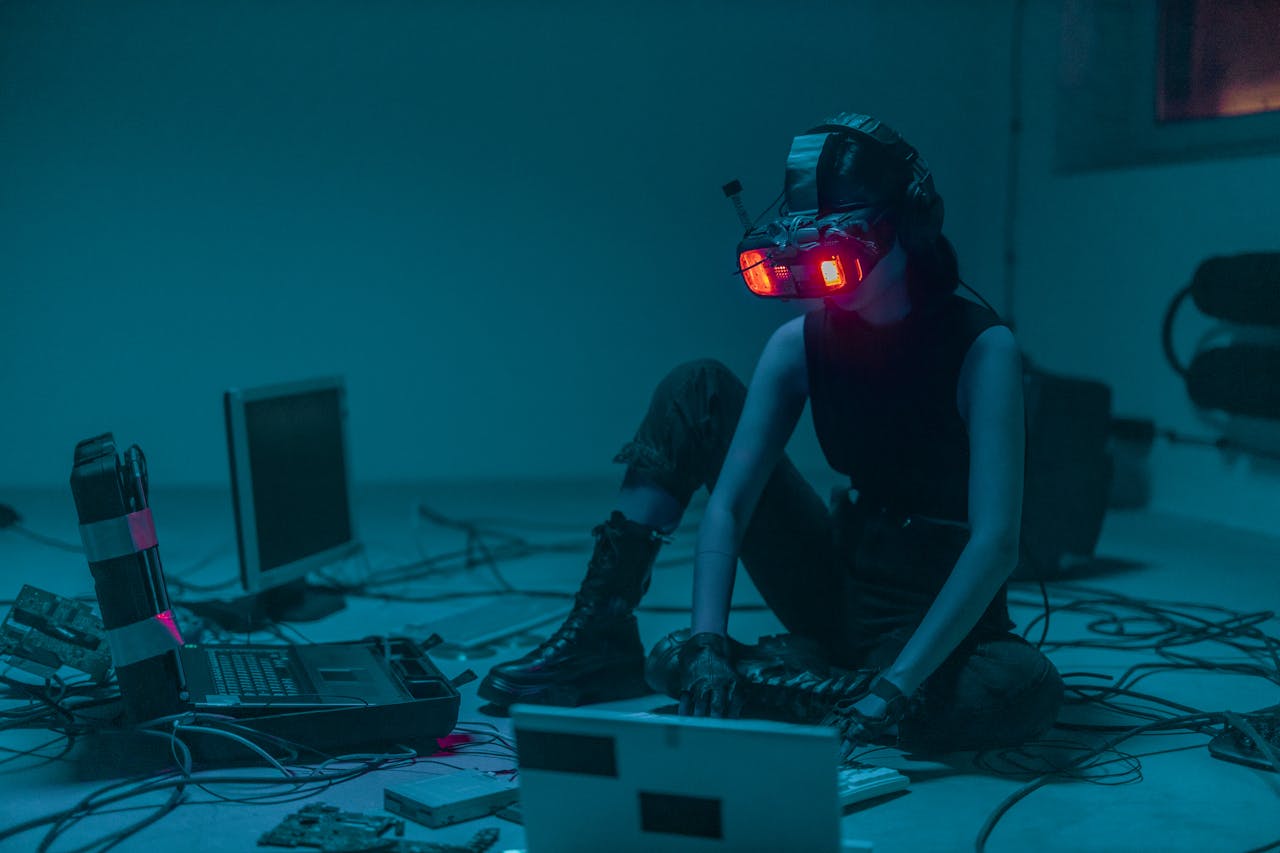Have you ever disagreed about whether a particular color is navy blue or black? If so, you are already aware of how perception affects reality. Even when reality isn’t physical, it feels personal and genuine because of the way our perceptions, experiences, and biology filter the world around us. This idea is essential to understanding why digital encounters like AR and VR are used for interactive responses. Let’s look at how these realities differ from one another.
What Is Augmented Reality (AR)?
Digital content like text or pictures, gets superimposed over the physical world with AR. AR enhances your surroundings, as opposed to VR, which replaces them. Consider the IKEA app that lets you arrange furniture in rooms and filters for users. Revenue in the AR and VR market worldwide is projected to reach US$46.6 billion in 2025. AR is at the low-immersion end of the virtuality continuum. While leveraging additional digital layers, users maintain a sense of groundedness. AR provides real-time data, enhanced decision-making capabilities, and captivating user engagement.
What is Virtual Reality (VR)?
In VR, the physical world is replaced by an incredibly lifelike computer environment. When using a VR headset, the user’s eyes and ears are absorbed by the virtual world. It creates a sense of “presence” that overrides the knowledge that the experience is a fabrication.
Virtual reality games are a good example of this. Users are shown a simulated board hanging from a building. Even with physical protection, a lot of people nevertheless feel genuine fear. When a person places their feet on the illusion, it becomes much more realistic.
VR is perfect for fully immersive experiences in metaverse applications. Such as virtual meetings, social interaction, product simulations, and training settings.
Extended Reality (XR): The umbrella for immersive tech
Technologies that combine virtual and real-world environments are known as XR. XR serves as a conceptual link between the digital and physical worlds with AR and VR.
XR technologies provide extremely immersive user experiences with metaverse development. XR technologies have useful uses in a variety of industries. Such as gaming, education, retail, and remote work. These include overlaying data onto the actual world (AR) and immersing users in a virtual environment (VR). You can get a Metaverse development company for more assistance. Now is a fantastic time to invest in XR for metaverse projects because of their full potential.
AR vs. VR vs. XR: Key Differences You Must Know
Here is how the three realities differ from one another.
Definition
- AR: By superimposing digital components such as text, photos, or 3D models to improve the physical world.
- VR: It completely changes the real world by creating an immersive digital experience.
- XR: All upcoming immersive techniques are included under this general name.
Level of immersion
- AR: At least keeps consumers vested in reality by providing moderate immersion.
- VR: A high degree of immersion provides and completely attaches users to a virtual environment.
- XR: Depending on the experience, it covers the entire range, from minimal to total immersion.
Device requirements
- AR: AR is available through glasses (such as Google Glass) or smartphones and tablets.
- VR: PlayStation requires a headset like the VR, HTC Vive, or Oculus Rift.
- XR: Mixed experiences of AR and VR use a hybrid setup for technology.
User Environment
- AR: With additional digital materials, users live in the real world.
- VR: It immerses users in the world created by computers.
- XR: In a single experience, users can switch between the digital and real world.
Interactivity
- AR: Users look at digital elements in real locations, resulting in limited interaction.
- VR: Full interaction, users interact directly with the virtual world.
- XR: Both real and virtual elements are manipulated and switched by users.
Use Cases
- AR: Medical diagnostics, product visualization, navigation, and educational overlays.
- VR: Remote Cooperation, Training Simulation, Gaming and Virtual Tour. XR: Multi-level metaverse application, distance operations, and complex industrial training.
Real-World Examples
- AR: AccuVein Identification, Ikea Place, and Pokémon Go.
- VR: Walk the Planck, Beat Saber, and Virtual Workplace.
- XR: Immersion Digital Twins, Microsoft Aries, and Meta Horizon Workroom.
Development Complexity
- AR: Medium -annual environmental mapping and user experience required.
- VR: High-resolution tracking, audio synchronization, and individual 3D settings are required.
- XR: Very high global time data syncing and smooth integration of AR and VR is required.
Cost
- AR: Due to its current mobile adaptability, it is cheaper.
- VR: More expensive because this requires specialist software and hardware.
- XR: Due to hybrid system integration, costs are usually higher, although it varies depending on complexity.
Conclusion
AR, VR, and XR are equipment with different functions; They are not contestants. Consider the experience you want to choose, which is best for your metaverse project. These immersive experiences will become rapidly important in the metaverse. The firms adopting AR, VR, and XR will now make way for digital changes, employee productivity, and customer engagement.
